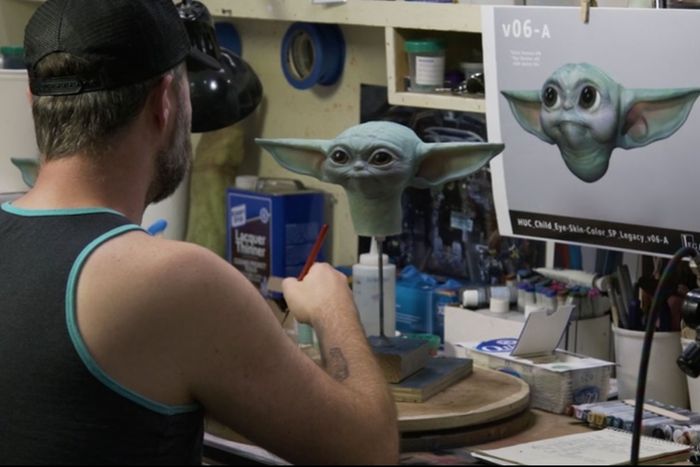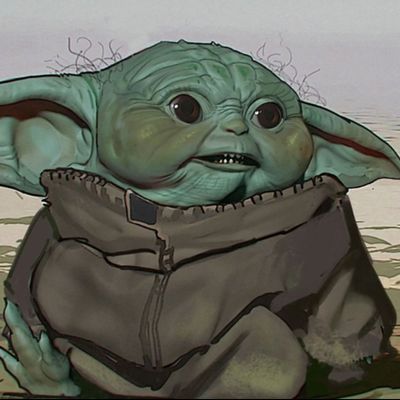
No one could have predicted that one of the biggest landmark cultural events in recent memory would be a wide-eyed infant Muppet from the Star Wars universe. But when Jon Favreau’s space-Western epic The Mandalorian launched last November as the marquee original series on Disney+, the show’s breakout character immediately captured the Zeitgeist. He drank space tea, rode in a space carriage, wore an oversize space jacket. He was the epitome of adorable. He was Baby Yoda.
But until now, Disney has been diligently secretive about exactly what Baby Yoda was — whether he was some kind of puppet, a cleverly animated CGI creation, an animatronic doll, or some elaborate combination of the above. When I reached out to Disney in December hoping to learn more about the process and interview people from the special-effects team responsible for the creature, they effectively told me those details were under wraps; my contacts in the SFX industry didn’t know anything either, including which effects studio actually did the work. Baby Yoda was shrouded in mystery.
This week, though, Disney+ released the fifth episode of Disney Gallery: The Mandalorian, its eight-episode documentary series that offers a behind-the-scenes look at the making of the show. Called “Practical,” the episode delves into the complex practical VFX work that went into The Mandalorian, including comprehensive overviews of how they brought to life the android bounty hunter IG-11, the Ugnaught moisture farmer Kuiil and, of course, the endearing alien superstar himself, Baby Yoda — whom the showrunners, directors, producers, cast members, and everyone on the crew refers to as “the baby” or simply “baby.” In fact, one of the first Baby Yoda revelations is that the original script introduced him as “a baby, the same race as Yoda.”
The look of Baby Yoda, obviously, was derived from Yoda himself, as he was conceived by George Lucas and Frank Oz in the original Star Wars trilogy. In settling on how a member of Yoda’s race would be realized for The Mandalorian, Favreau drew inspiration from Gnomes & Goblins, a short virtual-reality film he has been working on for the last four years. “I had already been preoccupied with the look of big eyes and ears for motion,” Favreau says in the episode. “The idea of the face not being that expressive, but everything being about the eyes looking at you and the ears moving, was something that I had wanted to try.” Favreau and Mandalorian executive producer Dave Filoni looked at hundreds of concept drawings — all either too cute or too ugly — until they settled on the right look.
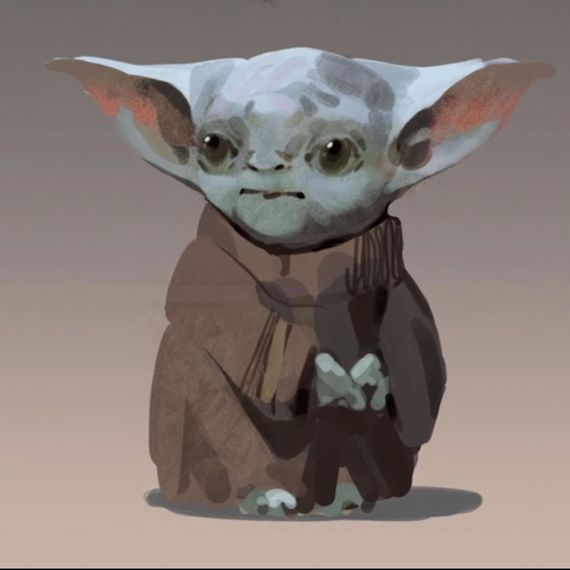
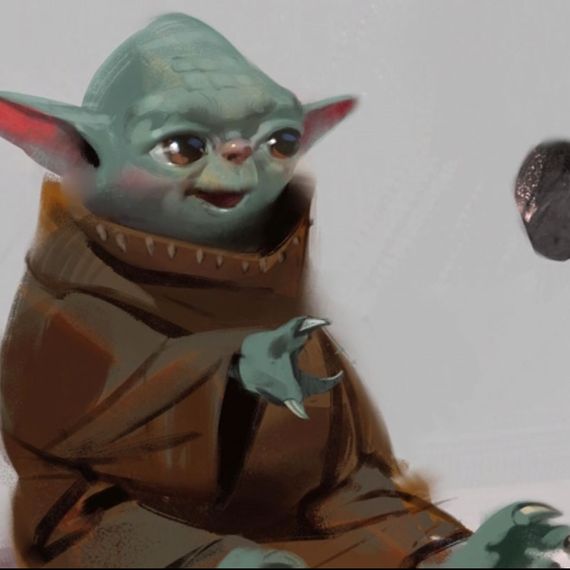
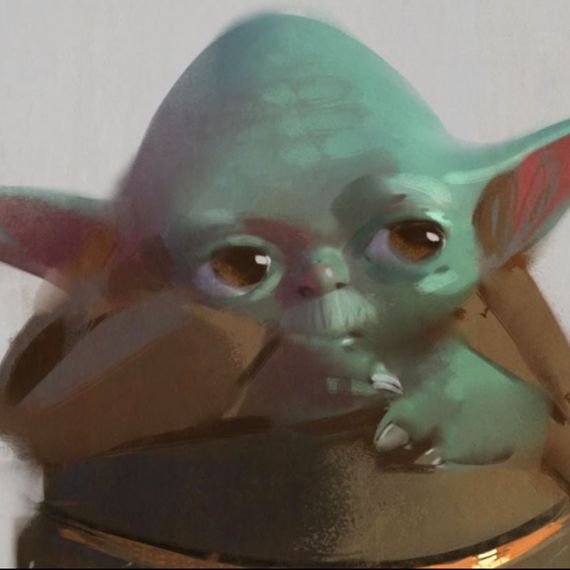

Once they’d determined how Baby Yoda should look, they needed to bring it to life, and the initial attempts at building models lacked the cuteness that had made the concept shine. So they brought in Legacy Effects, an SFX studio known for their prosthetic and animatronic work, to pull it off. “That’s when it really became the baby,” Favreau says. The team at Legacy spent the next three months building an extraordinarily sophisticated puppet, handcrafting every hair follicle and inch of its body and putting it together with meticulous care. Based on what’s shown in the episode, Baby Yoda’s hands, eyes, ears, and facial features are operated by a team of a half-dozen puppeteers working in tandem: One controls the movement of the ears by remote control, another guides the torso with more traditional rods, like a marionette. Each puppeteer has to anticipate the movements of the other and respond in time, as the filmmakers “direct” the puppet as one cohesive whole, almost as if it were an actor. As the puppeteer controlling the eyes sees the puppeteer controlling the head start a pivot, he has to nimbly follow along, so that the movements look and feel smooth and organic. It’s an amazingly difficult effort of coordination and timing. One of the puppeteers describes the process as “like a band jamming out.”
“It’s really disconcerting and effective when you see it,” director Taika Waititi says in the Disney Gallery episode. He describes the feeling of looking over at it on set and watching it turn its head to face you; even if you know there are puppeteers doing it, there was a certain magic that gave Baby Yoda’s every movement an eerily realistic life. The cast and crew held it as if it were a real child; people talked to it as though it were alive. “It was just so real” is the prevailing sentiment.
A testament to just how plausible the Baby Yoda puppet looked came from an unlikely source: Werner Herzog. Director Deborah Chow remembers that when she was shooting the show’s third episode, Herzog was acting opposite the baby and at one point “forgot that it was a puppet.” “He got so into the baby that he started directing the baby directly, as though he was talking to a person,” Chow says. “He doesn’t realize the puppeteers are actually the ones. He fell in love with it.” (Later in the Disney Gallery episode, Herzog describes the baby as “heartbreakingly beautiful.”)
Herzog’s affection was so strong that he demanded that Chow and her crew “commit to the magic” and abandon the intended plate shots that would be used for visual effects. Originally, it seems the production hoped to augment the puppet with some light digital wizardry, and in some cases to use the puppet as a model for a digital substitute. But, Filoni admits in the Disney Gallery episode, Herzog was right: In the end, the production used the Baby Yoda puppet almost exclusively. Any CGI work they did end up using was designed expressly to replicate the puppet — they didn’t want to add anything digitally that would change how the puppet itself looked already. It’s reassuring to know that however much people at home fell for Baby Yoda, people on set were no less enamored. Baby Yoda is just that universally beloved.
Want to see Baby Yoda in The Mandalorian? You can sign up for Disney+ here, or as part of a bundle with Hulu here. (If you subscribe to a service through our links, Vulture may earn an affiliate commission.)


